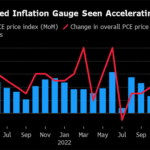By Rob Sabo
The number of borrowers with excellent credit scores increased to nearly 41 percent in the third quarter, but the number of high-risk subprime borrowers was also up, credit reporting agency TransUnion reported on Nov. 3.
The number of super prime borrowers—low-risk consumers with great credit scores—increased by 3.8 percent, or approximately 16 million additional consumers, from 2019 figures, TransUnion said in its latest credit insights report. However, those gains were countered by a greater number of consumers falling into the subprime category—borrowers who pose the most risk of credit default.
According to the Consumer Financial Protection Bureau, subprime borrowers have credit scores ranging between 580 and 619, with near-prime borrowers holding scores ranging between 620 and 659. Super-prime borrowers have credit scores of 720 or higher.
The number of subprime borrowers had decreased to as low as 11.8 percent in the third quarter of 2021 following a number of financial relief programs initiated during the COVID-19 pandemic that helped consumers pay down debt and catch up on delinquent credit accounts, TransUnion said. But in the most recent quarter, the number of subprime borrowers jumped to 14.4 percent.
“We are seeing a divergence in consumer credit risk, with more individuals moving toward either end of the credit risk spectrum,” said Jason Laky, TransUnion’s executive vice president and head of financial services.
“While super prime has steadily grown since the pandemic, subprime has returned to pre-pandemic levels—leaving the middle tiers increasingly thinner. This shift suggests that while many consumers are navigating the current economic climate well, others may be facing financial strain.”
With greater access to credit, card balances continue to soar. More than 174.8 million borrowers owed $1.11 trillion in total credit card debt in the third quarter. The average credit card debt of $6,523 is the highest amount in the past three years, TransUnion reported.
Subprime borrowers are also expected to access credit in increasing numbers. Globally, the starter card market—cards typically issued to subprime borrowers—is projected to increase from $348 billion to $587 billion by 2030.
Borrowers often turn to personal loans to pay down high-interest credit card debt, and the number of subprime consumers who took out personal loans in the third quarter skyrocketed 35 percent from the prior year. Personal loan balances totaled a record $269 billion, up by 28 percent from the same quarter in 2022.
Many of those borrowers bypassed traditional financial institutions and turned to online-only banks, with digital lending accounting for almost two-thirds of personal loans originated this year.
Falling mortgage interest rates—down to 6.17 percent at the end of October, the lowest rate since September 2024—led to an 8.3 percent rise in new loan originations, TransUnion said.
“As interest rates begin to ease, mortgage activity is showing signs of recovery, supported by improving affordability conditions,” said Satyan Merchant, senior vice president of automotive and mortgage business at TransUnion. “We remain closely attuned to the potential for further rate reductions should the Federal Reserve proceed with additional cuts.”
American consumers hold $12.7 trillion of mortgage debt, with an average balance of $268,060. Mortgage delinquencies of more than 60 days late spiked 0.12 basis points to 1.36 percent from the prior year.
“Rising delinquency rates—particularly within certain borrower segments—underscore the importance of maintaining a vigilant and proactive approach to risk monitoring and portfolio management,” Merchant said.





